
Question: Does your gym employ a data analyst?
You know, the guy that parses through tons of gym member data in a darkly lit backroom, infrequently popping out of his office to do bicep curls between deploying classification algorithms for different machine learning models?
We didn’t think so.
Let’s be honest: in the last few years many gyms have gone from printing out 20-page long membership contracts, photocopying drivers licenses, and coupon stuffing envelopes to modernizing various club operations with self-service kiosks, access controls, and automated member correspondence.
Clearly, we’ve come a long way. So, what’s next?
More and more businesses are turning to predictive analytics for help in decision making and the gym management industry is on the cusp of doing the same.
But if you look outside of huge fitness center corporations, virtually no club has hired an in-house analyst to make predictions or recommendations about various club processes based on member data.
And seeing as analytics are now more prominent in almost every industry, it’s time for gyms to get ‘smarter’, to finally use the large amounts of member data at their disposal to make more informed decisions with.
This brings us to Machine Learning, the process of deploying complex algorithms to learn to predict or infer outcomes based on data analysis.
Machine learning is already widely used in a variety of industries such as, but not limited to:
- Online retail
- Self-driving cars
- Financial trading
- Search engines
- Entertainment companies

The big knot that ties all of these industries together is, of course, data...lots and lots of data.
And it is through the collection and analysis of this data via machine learning that these industries, such as e-commerce, increase their sales revenue by anywhere from 5-20%.
But it’s important to note that within gym management, sales are only half the battle--there’s retention to worry about too! Ultimately, machine learning can provide clubs with:
- Revenue predictions
- Churn forecasts
- Class recommendations
- Product recommendations
- Motivations systems for members
Once the data is analyzed and the predictions forthcoming, the most relevant actions can be taken automatically through the power of AI.
But before we get into the eggs & ham of it, we’ll walk you through how machine learning works in tandem with club management.
Data Collection
Just as a car needs gas, machine learning algorithms need data to parse and process to predict outcomes and make recommendations.
Luckily, the fitness industry is already oversaturated with integrated apps and machines that act as data beacons to power the machine learning process. Everything from calorie counters to workout trackers and FitBits, the data is out there.
But even without any 3rd party apps, your club is probably already sitting on enough 1st party member data to make smart recommendations and predictions simply based on:
- Attendance history
- Age
- Gender
- Club purchase history
- Bookings history
These are of course just a few data points that can help determine specific outcomes such as churn or class recommendations, but the possibilities are nearly endless depending on what kind of data collection beacons you have integrated with your system.
The Learning Process
Once you have this data (with client approval) it can be used as a training set for machine learning algorithms to learn from.
Machine Learning is essentially a large component of Artificial Intelligence (AI) that informs the decision making process by finding correlations between different datasets.
Using different algorithms, a machine learning module will essentially learn in a “supervised” manner on a “training set”, where each entered data set or “input” is coupled with an expected outcome or “outputs”.
If we wanted to classify something as being an apple or not an apple, then we might use these data points, evenly weighted, as our expected outputs:
- Red = Y/N
- Round = Y/N
- Fruit = Y/N
- Weight between 70-100 grams Y/ N
In some training sets, we weight each input variable if we want to express them as probabilities. In our apple example, we’ll give each input the same weight.
Thus, if we have an object that has ¾ of these expected inputs present, then the object would have a 75% probability of being an apple in our model.
Coming back club management, let’s say we wanted to predict what members would be likely to churn in the near future and which would not.
If we took all the data points listed above for gym members in the last year, and then we would label a result as either “churned” or “not churned” based on if the client churned or not.
Then we would train the algorithm by enlisting all the inputs for each member (attendance, age, gender, etc.) with their defined labels (churned or not churned) in our training set.
Since we want to express our outcomes as probabilities, then we can assign each input variable a “weight”, with some weighing more than others
Over time the algorithm will weight different variables once it learns
Our training set might look like this, but with a lot more inputs:

Once the data has been “learned” from, we would remove the expected labels (churned or not churned) and see if the model can correctly use the input data its given to predict the outcomes based on the data its learned from.
After running various models have been run through the training sets, we’ll check their accuracy in the test sets and choose the most accurate and stable (the accuracy difference between the training and test sets) model.
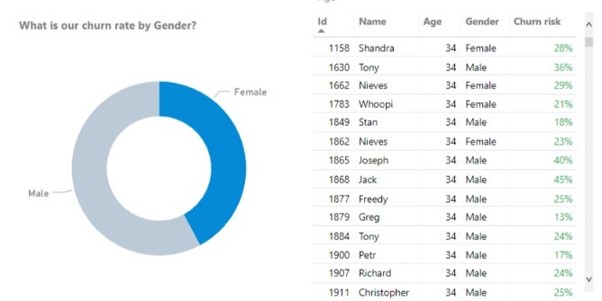
This can also be reverse engineered for other outcomes like product recommendations on a product to product basis, class recommendations, and more.
Once we have our classified groups (churn risk vs. non-churn-risk) it would be time to take action.
The Intelligence
AI ultimately acts as the umbrella discipline for various predictive analytics, machine learning, language, vision, and other communication systems and processes.

Once we have a machine learning model that we’ve validated and rolled into production, we would use the data to create an environment for our AI to pull from.
When the data is gleaned by Machine Learning and is ready to be turned into action, AI automation processes will begin by A/B testing various communication channels and messages as it learns which are most effective.
For example, machine learning may recommend that a specific group of club members be offered a package of personal trainings or reduced membership pricing.
The club would have created a few different messages for the same offer for the AI to choose from. It would then test each one respectively, evaluate the results, and rollout the best performing options accordingly for similar future audiences.
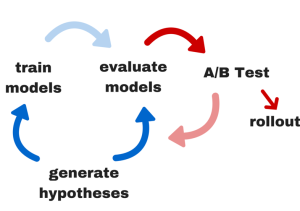
There are of course a lot more moving parts behind the scenes; however, this covers a general approach of how content selection takes place.
Now that we know the general process, let’s take a look at some specific club use cases.
The Smart Gym
Using machine learning processes, clubs can now make predictions and recommendations over a wide variety of club operations to not only improve their bottom line, but to keep members satisfied and on track to complete their goals.
Remember, people are coming to gyms with goals rooted in self-improvement. Any improvements in the way you connect with them can be the difference maker between an incomplete New Year’s resolution and a life changed for the long haul and for the better.
Product Recommendations
There’s the old adage that “the customer is always right.”
This motto stems from a basic understanding between vendor and consumer transactions: you don’t know what the customer wants until they ask for it.
In today’s age, fitness clients are often times too busy to pick up the phone and call in to renew their memberships or wait the extra five minutes at the front desk to pick up their post-workout drink.
That’s why product recommendations are almost universal in any online retail business. And they’re slowly becoming more and more driven through machine learning processes to boost sales.
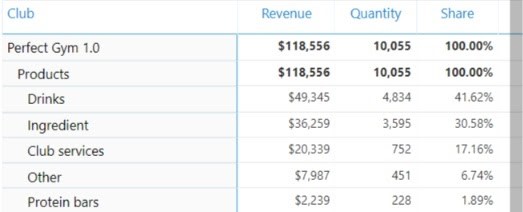
These recommendations are determined by different machine learning algorithms. They can be based on unsupervised learning algorithms that find correlations between purchased items.
For example, the algorithms may detect that people who buy protein powder and creatine often buy pre-workout drinks as well. These algorithms would find these correlations and recommend pre-workout drinks to people who also frequently buy the other two items.
Recommendations can also be based on supervised learning algorithms with one example being that many people that shared a common output variable (protein bar purchase) also had a number of common input variables as well (frequent attendance, similar memberships, gender, weight, etc.) and would recommend items to future clients who had similar input variables.
The end result is an impressive system of association rules that are used when recommending products to clients, whether it’s at the front desk for receptionists to use or in your digital or promotional outreach.
Class Recommendations
Using similar techniques that are used in product recommendations, we can recommend what classes to offer to increase bookings and attendance.
The data collections beacons for these are a bit more complex as it requires more specific member data such as:
- Class attendance frequency
- Class booking frequency
- Class ratings
- Member goals
- Member workout preferences
These are just a few points that can be used as input variables, but they along with other data can be used to substitute certain classes for others to drive engagement.
This can be accomplished with supervised learning algorithms, unsupervised, or both. The end results are recommended classes with their predicted attendance growth.

Many recommendation algorithms use a combination of supervised and unsupervised learning techniques; however, the most important aspect is that the algorithms will learn which recommendations are successful and improve them over time.
Attendance Predictions
How many members will be in your club on a given day? How many of them will be brand new? What age groups will be most active and when?
The answers to these questions can make a huge difference in staffing decisions on a given day to insure that the club runs smoothly at peak traffic hours.

With machine learning running your gym, you can have these predictions dispensed weeks or even months ahead with updates made in real time.
For example, as the algorithms continue to learn, they will update their attendance predictions depending on input variables such as:
- Member attendance over time
- Random walk-ins
- Class bookings vs. actual attendance
- Weather
Ultimately, these factors (coupled with many more) are weighted against historical records for each input variable and how each affects the other.
For example, a higher amount of regular attendees increases the likelihood of more guests as they often times accompany the member who referred them. Or it might calculate that on past rainy days club attendance dipped by 7% and factor that in with upcoming weather reports.
As you can see, the machinations are endless and it takes a smart system to make these predictions with greater accuracy to help you determine how best to deploy your staff and facilities for more satisfaction.
Sales Predictions
Using similar algorithms, but different data sets than above, we can produce sales predictions for future dates.
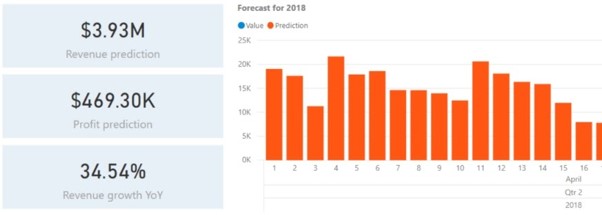
Again there is of course a huge reliance in using historical data as a training set, but once a validated model has been produced it can be used to process current sales data and make future predictions with greater accuracy over time.
These really come in handy when you’re deciding when you should create club promotional campaigns.
Moreover, you can drill down into the data to see which demographics in terms of gender and age groups are expected to bring in the most revenue and target the predicted lower performing ones with additional coupons or vouchers.
These can be done on a club by club basis, grouped, or even over an entire chain.
Churn Predictions
Perhaps one of the most important models needed throughout the gym management industry is the churn prediction model.
As noted in examples above, these use a variety of supervised learning algorithms to assign churn probabilities to individual members and in aggregate for entire clubs.
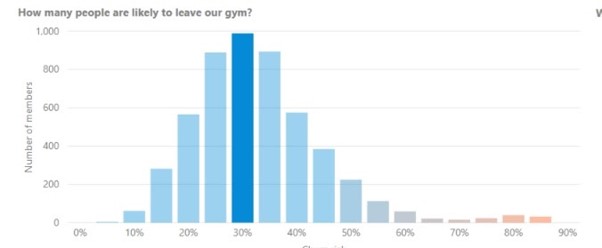
As it is with recommendations, these predictions will become more accurate over time as more data accumulates and it learns from correct and incorrect predictions it makes.
Additionally, as the algorithms continue to learn, they will recalibrate the ‘weight’ or influence of particular input variables have if they become more frequent in churned members over time.
For example, over time the algorithms begin to notice that since the front desk no longer sold a certain type of supplement, a large amount of members who bought that supplement started to churn more frequently.
The historical data linked with the purchasing of these supplement, as an input, would begin to be weighted more in churn probability calculations.
Essentially, it all comes down to the data at your club’s disposal and how machine learning can parse through it to find the correlations that would otherwise go unnoticed by human eyes.
Conclusion
Data analytics have already found a home in many if not most industries around the world. Within fitness club management, the discipline is already materializing before our very eyes.
It’s a great wonder that with all of the 1st party data that gyms accumulate it’s now just starting to look toward the benefits of machine learning and AI as viable solutions for decision making.
It’s no longer a pipe-dream of the future; it’s here. Now.